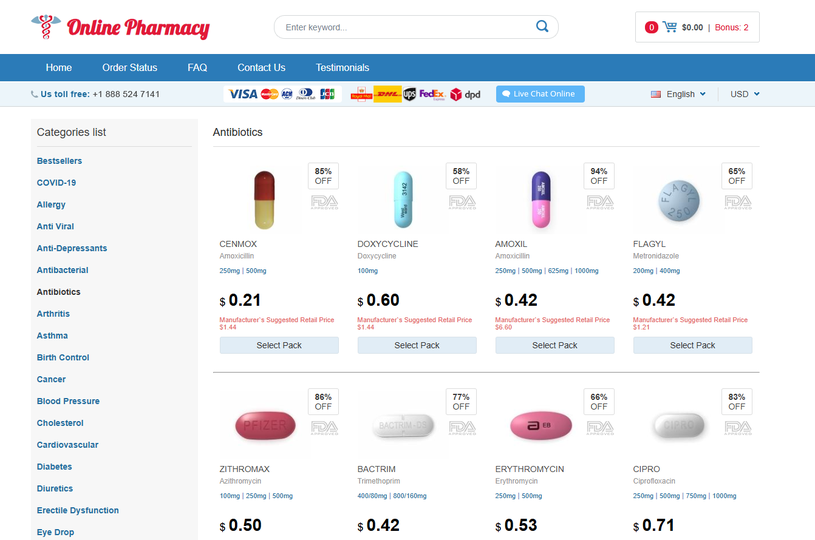To Buy Cellcept No Prescription Visit Our Pharmacy ↓

Navigating Contraception While on Cellcept
Consistent administration of Cellcept is crucial for maximizing its effectiveness in managing your condition. Its remarkable efficacy has transformed the landscape of patient care, offering hope and respite from various ailments. Remember to report any new symptoms or concerns promptly to your healthcare provider for proper evaluation and guidance in managing your medication regimen. This powerful immunosuppressant plays a vital role in preventing organ rejection and promoting successful transplants. For instance, antacids containing magnesium or aluminum should be taken at least one hour before or two hours after Cellcept to avoid interference with absorption. Clinical trials have shown that patients taking CellCept experience improved long-term graft survival rates compared to other immunosuppressants. Its targeted mechanism allows for precise control over the immune system's aggression, thereby providing therapeutic benefits while attempting to minimize the adverse side effects typically associated with broad-spectrum immunosuppression.
Current Research Findings on Cellcept Efficacy
- **Emerging Applications of Cellcept in Medicine:**. Women taking Cellcept must engage in effective contraception due to the potential risk of teratogenic effects on a developing fetus. The objective is to maintain disease control while minimizing potential harm to the developing fetus. The active ingredient, mycophenolic acid, interferes with DNA synthesis, which can affect the growth and development of the fetus. The drug's mechanism can disrupt rapidly dividing cells, crucial during the early stages of pregnancy. Expectant mothers on Cellcept scripts should consult their healthcare providers stat if they discover they are pregnant. Composed of mycophenolate mofetil, it acts by blocking a key enzyme needed for the growth of certain lymphocytes, thereby preventing the immune system from attacking the transplanted organ.
Overview of Cellcept and Its Uses
Likewise, hydroxychloroquine, often used for conditions like lupus, can be safely continued during pregnancy, helping to manage symptoms effectively. This translates into a lower risk of graft loss, ultimately improving the longevity of the precious transplanted organ. As the research progressed to larger, more diverse patient populations, the true value of Cellcept in transplant medicine became increasingly evident. The development of Cellcept marked a new dawn in the field of transplantation. Incorporating certain lifestyle changes can also play a crucial role in managing side effects. Healthcare providers typically advise using two reliable forms of birth control concurrently to minimize the risk of unintended pregnancy, starting at least one month before therapy initiation and continuing for six weeks after the last dose of mycophenolate mofetil (the active ingredient in Cellcept). The introduction of Cellcept has brought hope and new possibilities to transplant recipients, offering a brighter future and enhancing the quality of life for countless individuals.
Benefits and Risks of Using Cellcept
Description. Studies show a high risk of congenital malformations, particularly affecting the face and limbs, alongside potential cognitive impairments. Cellcept, known generically as mycophenolate mofetil, is an immunosuppressive medication often prescribed to prevent the rejection of transplanted organs. By harnessing the power of Cellcept, healthcare providers can address complex health challenges with enhanced effectiveness and streamlined interventions. By dialing this response down, Cellcept ensures the body's acceptance of newly transplanted organs without severe immunosuppression. Trust your healthcare provider to write the right script to manage your condition safely. For pregnant women requiring medication for autoimmune conditions, several alternatives to Cellcept may offer safer options.
Future Possibilities and Developments in Cellcept Research
Additionally, limiting consumption of foods that may interact with Cellcept, such as grapefruit and grapefruit juice, is advisable due to their potential to affect drug metabolism. Ongoing studies seek to enhance the efficacy of medications like Cellcept, optimizing dosages and administration methods to maximize benefits while minimizing risks. Clear communication is essential; be transparent about all medications in use, including ‘On the Counter’ ones. Moreover, the significance of personalized medical guidance in circumnavigating the obstacles posed by side effects cannot be overstated. Consultation with a healthcare provider is imperative to select the most appropriate contraceptive methods while considering individual health profiles and potential drug interactions. Patients may receive Cellcept in tablet form for oral administration or as a liquid suspension for those who have difficulty swallowing pills. Cellcept has been a game-changer in the realm of medicine, showcasing its potency in treating a spectrum of diseases.
Combination Therapy: Enhancing Efficacy through Synergistic Approaches
Cellcept can also be a part of a compounded medication regime for those with autoimmune conditions like lupus or rheumatoid arthritis. Building a strong support network of family, friends, healthcare professionals, and possibly even support groups can make a substantial difference in navigating through the side effects. Aside from its primary use in transplantation medicine, Cellcept is also prescribed for certain autoimmune conditions, such as lupus nephritis, where it helps to control the patient's immune response against their own body tissues. Additionally, severe stomach or abdominal pain, yellowing of the eyes or skin (jaundice), and severe or persistent vomiting or diarrhea are warning signs not to be ignored. Recognizing these red flags early and seeking professional advice can significantly mitigate health risks, ensuring the benefits of Cellcept outweigh its potential downsides. Patient compliance plays a pivotal role in ensuring the long-term success of kidney transplantation. Primarily used in patients undergoing organ transplants, it acts as a powerful ally in preventing the body's rejection of the new organ.
From the Laboratory to the Pharmacy Shelf
Healthcare providers will likely suggest a preconception appointment, which is vital in planning for a safe pregnancy and healthy baby. Their efforts have not only made Cellcept accessible to patients worldwide but have also set a precedent for bringing future medical innovations to market. Cellcept offers a spectrum of advantages for transplant recipients, aiding in the prevention of organ rejection and promoting long-term graft survival. Researchers are exploring innovative approaches, such as the development of new dosage forms and novel drug delivery systems, to enhance the effectiveness of transplant therapies. Long-term studies have demonstrated the remarkable efficacy of cellcept in extending kidney graft survival rates. Cellcept has been a beacon of hope for many patients facing life-altering autoimmune diseases and organ transplants. Beyond these physical symptoms, Cellcept can affect blood counts, leading to anemia (low red blood cell count), leukopenia (low white blood cell count), and thrombocytopenia (low platelet count), which require regular monitoring through blood tests.
Potential Risks of Cellcept during Pregnancy
Remember, each individual’s experience with Cellcept can differ, so what works for one person might not work for another. On forums and in support groups, patients share their journeys, offering hope and solidarity to those just beginning their path with Cellcept. Current research indicates promising results in the efficacy of Cellcept in treating a variety of conditions, showcasing its potential as a versatile medication. Cellcept (mycophenolate mofetil) is commonly prescribed to prevent organ rejection post-transplant, but its use during pregnancy raises significant concerns. Regular health assessments and blood tests become indispensable tools in this pursuit, allowing for timely adjustments to the dosage and possibly the administration method to better suit the patient’s condition and tolerance levels. The ongoing exploration includes studies on its efficacy in treating a broader spectrum of autoimmune disorders, beyond its current use in preventing organ transplant rejection. This association can serve as a helpful cue to take your medication consistently.
When to Seek Medical Help: Red Flags Unveiled
CellCept (mycophenolate mofetil) helps suppress the immune system, lowering the risk of the body rejecting the transplanted kidney. The success of Cellcept extends beyond individual cases, resonating through the medical community and among those it serves. The journey of Cellcept, a pivotal drug in the world of organ transplantation, began with the mission to combat organ rejection. When considering a modification to Cellcept (mycophenolate mofetil) therapy for a woman planning a pregnancy, healthcare providers may evaluate other immunosuppressive options with a safer profile during gestation. A critical facet involves dietary adjustments; prioritizing a balanced diet rich in fruits, vegetables, lean proteins, and whole grains can support your immune system and overall health. By minimizing the potential side effects commonly associated with earlier immunosuppressive treatments, Cellcept improved the quality of life for transplant patients, offering them a more promising outlook for long-term success and health post-transplantation. Cellcept's ability to dampen immune activity helps maintain the longevity and function of the transplanted organ, making it a cornerstone in transplant medicine.
The Common Side Effects: What You Might Experience
Pregnancy demands meticulous planning, especially when dealing with medications like Cellcept. The advent of personalized medicine, where treatments are tailored to the individual's genetic makeup, may see Cellcept being prescribed in more nuanced and effective ways, promising better outcomes for patients with fewer side effects. For instance, gastrointestinal issues or blood cell count abnormalities may necessitate a reduction in dose. Its mechanism of action targets specific immune cells, reducing the risk of rejection and allowing patients to thrive post-transplant. These could indicate liver issues, gastrointestinal problems, or dehydration, respectively. This collaborative approach ensures that every aspect of the patient's health and treatment regimen is carefully calibrated to support a pregnancy, emphasizing the importance of a structured plan devised alongside medical professionals well-versed in managing high-risk pregnancies associated with immunosuppressive therapies. The timing of any change, ideally, should occur prior to conception to stabilize the patient's condition on the new regimen and reduce the risks associated with active disease during pregnancy.
